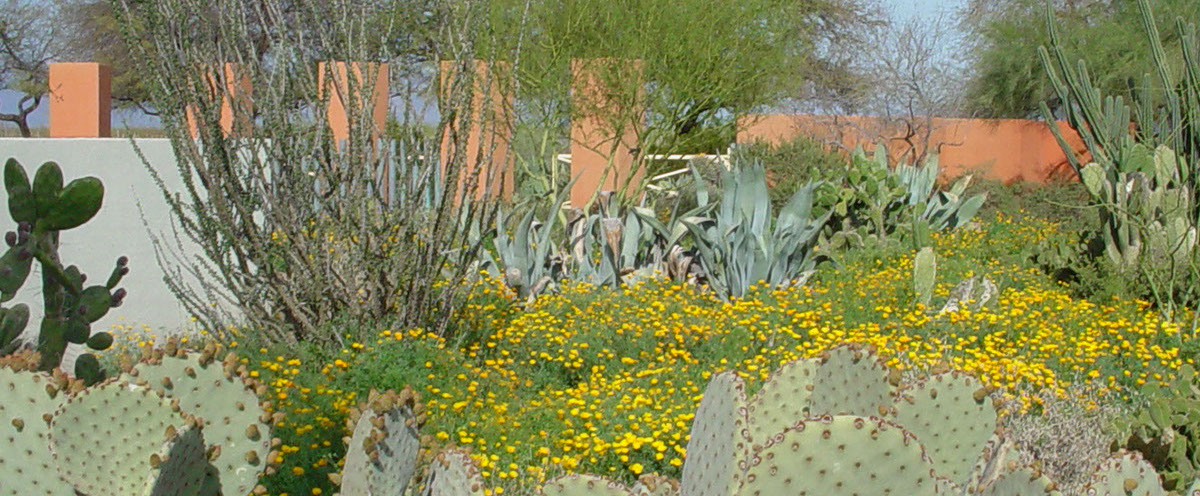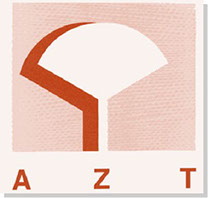


How Desert Trees Grow
Successful and effective maintenance of desert trees requires an understanding of how trees grow and mature. There is an old trick horticulture question that goes like this: At age 16 Bill and Betty carved their initials about 4' above the ground on the trunk of a 15' tall tree. Thirty years later they return to the tree which is now 45' tall. How far above the ground are their carved initials now? The answer is 4' because tree growth occurs at the terminals or tips.
Growth and elongation of plants occur at the root and shoot terminals and (for plants like desert trees that exhibit branch and trunk thickening) along a ring of cells called the cambium. All three regions share some common features. All produce large quantities of cells that will subsequently elongate and increase in size and account for the lengthening and thickening of plant tissues.
Shoot terminals or apical buds grow towards the sun and are called phototropic. Conversely root tips are geotropic growing down under the influence of gravity. Along with apical buds most desert species also have a bud at each leaf node. Apical dominance in plants refers to the fact that the growth proceeds generally upward (following the apical bud). When the apical bud is damaged or removed the lateral buds are activated and take over the role of the apical bud. The loss of the terminal can stimulate the growth of a large number of lateral bud resulting in the development of several branches where there had been only one. This may or may not be desirable depending on the location of the tree, surrounding plants, buildings or walks. When shortening or pruning back a branch, making the pruning cut just above a lateral branch or lateral bud reduces the stimulation of other buds, optimizing the effectiveness of pruning. Simply removing the apical bud or making cuts between the laterals can also stimulate the formation and growth of additional lateral bud (called adventious buds) resulting in thick clusters of multiple branches.
The same kind of stimulation occurs when root tips are damaged or cut. While there are no lateral buds, the removal of the root tips stimulates the production of additional lateral roots. With roots, this sort of proliferation of secondary "branches" is desirable and helps roots explore increasingly larger volumes of soil. This is one reason why it is prudent to gently root prune during transplantation. Gently loosening the root mass or carefully pruning discolored roots during transplantation helps promote the development of new roots at a time when the plant roots will have an increased volume of soil to colonize.
Tree trunks and branches also increase in diameter as they mature. Increase in branch diameter is the result of a layer of cells much like those found at the root and shoot terminals. This layer of cells, called the cambium, is arranged to form a ring (a cylinder really) just beneath the bark. This cylinder of cells divides repeatedly and the cells produced elongate and thicken causing the branch to increase in diameter or caliper. Selective pruning and thinning of branches not only helps reduce the risk of the tree blowing over in strong winds but also provides space between branches to accommodate the increase in branch caliper associated with normal growth. Failure to thin branches can, over time, create tight branch crotches that can cause branches and trunks to split or limbs to break and fall. These conditions pose dangers to adjacent structures, other branches, surrounding trees and pedestrians.
Pruning, transplanting and the location of a tree within the landscape all affect tree growth and development. Maintenance practices that compliment the trees natural growth habit will result in vigorous growth, continued health and greater vitality.

© Copyright 2000-2020 Arid Zone Trees